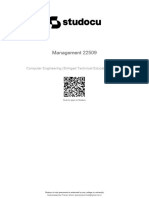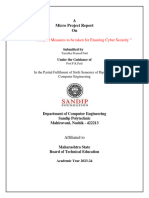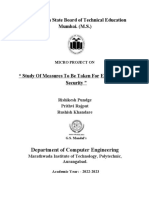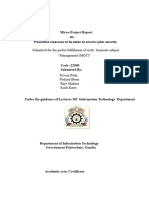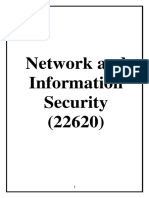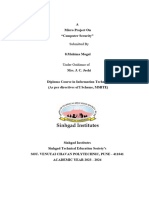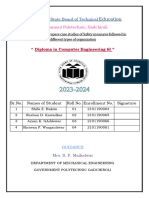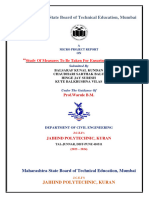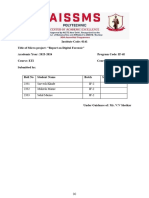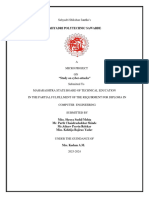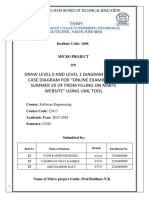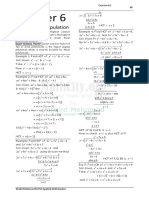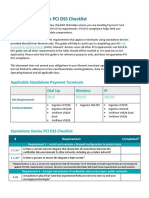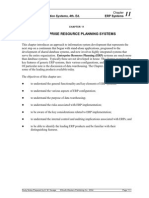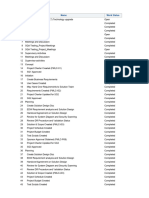0% found this document useful (0 votes)
34 views9 pagesMAN Report Ts
The micro project titled 'Study of Measures to Be Taken for Ensuring Cyber Security' aims to analyze existing threats and propose strategies to enhance cybersecurity awareness and practices. It includes a comprehensive methodology involving literature review, data collection, and evaluation of current technologies, ultimately leading to actionable recommendations. The project is conducted by students Shravani Dahale and Tushar Sarode from the Marathwada Institute of Technology, Polytechnic, as part of their Diploma in Electronics and Computer Engineering.
Uploaded by
tinu77gamingCopyright
© © All Rights Reserved
We take content rights seriously. If you suspect this is your content, claim it here.
Available Formats
Download as PDF, TXT or read online on Scribd
0% found this document useful (0 votes)
34 views9 pagesMAN Report Ts
The micro project titled 'Study of Measures to Be Taken for Ensuring Cyber Security' aims to analyze existing threats and propose strategies to enhance cybersecurity awareness and practices. It includes a comprehensive methodology involving literature review, data collection, and evaluation of current technologies, ultimately leading to actionable recommendations. The project is conducted by students Shravani Dahale and Tushar Sarode from the Marathwada Institute of Technology, Polytechnic, as part of their Diploma in Electronics and Computer Engineering.
Uploaded by
tinu77gamingCopyright
© © All Rights Reserved
We take content rights seriously. If you suspect this is your content, claim it here.
Available Formats
Download as PDF, TXT or read online on Scribd
/ 9


